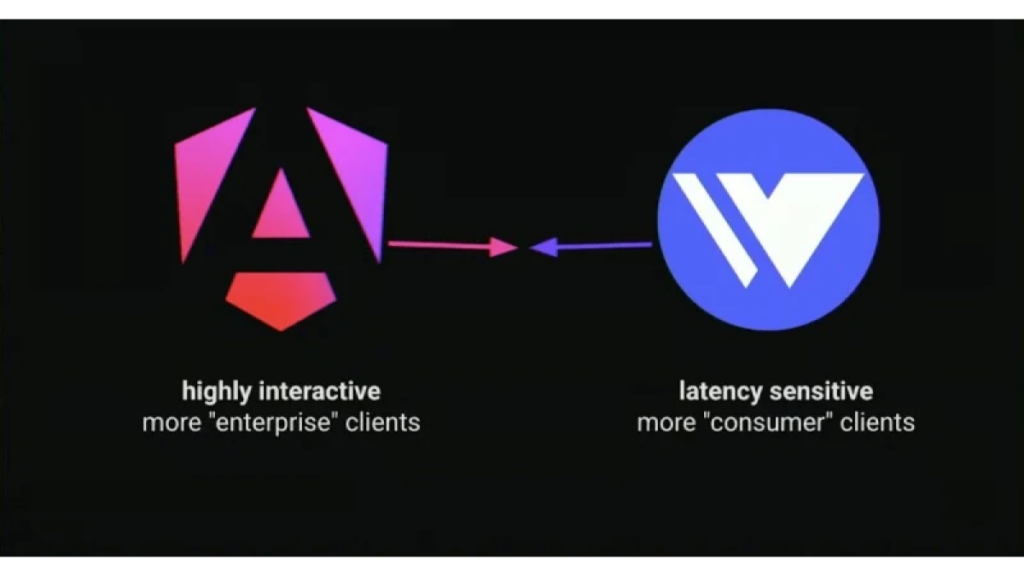Angular and Wiz Merge: A Major Development in Web Development Frameworks
In the dynamic landscape of web development, the convergence of technologies often heralds significant advancements. Recently, the union of Angular and Wiz, two prominent frameworks, has emerged as a major development, poised to reshape the way developers build web applications. This collaboration promises to leverage the strengths of both frameworks, offering enhanced capabilities and streamlined workflows for developers worldwide.
Angular, developed by Google, has long been acclaimed for its robustness, scalability, and extensive ecosystem. Its component-based architecture, coupled with features like dependency injection and two-way data binding, has made it a preferred choice for building complex, enterprise-grade applications. On the other hand, Wiz, a relatively newer entrant in the framework arena, has gained traction for its simplicity, speed, and focus on developer experience. Its lightweight nature and intuitive APIs have made it a favorite among developers seeking agility and productivity.
The merger of Angular and Wiz signifies a strategic move towards amalgamating the best of both worlds. By combining Angular’s maturity and feature richness with Wiz’s agility and ease of use, developers stand to benefit from a unified framework that caters to a wide spectrum of requirements. One of the key objectives of this merger is to simplify the development process while maintaining the flexibility and power needed for building modern web applications.
One of the most significant aspects of this collaboration is the enhancement of developer experience. With Wiz’s emphasis on simplicity and Angular’s comprehensive tooling, developers can expect a more intuitive and streamlined workflow. Tasks such as project setup, configuration, and debugging are likely to become more straightforward, enabling developers to focus more on building functionality rather than wrestling with the intricacies of the framework.
Moreover, the merger is expected to yield performance improvements, another critical factor in web development. While Angular has always prioritized performance optimization, integrating Wiz’s lightweight architecture and efficient rendering mechanisms could further boost the speed and responsiveness of Angular applications. This would not only enhance user experience but also make Angular a more competitive choice in performance-sensitive scenarios.
Furthermore, the convergence of Angular and Wiz is likely to catalyze innovation within the web development community. Developers from both camps can now collaborate more closely, sharing insights, best practices, and even contributing to the evolution of the merged framework. This collaborative ecosystem is essential for driving continuous improvement and ensuring that the framework remains relevant and responsive to the evolving needs of the industry.
From a strategic standpoint, the merger positions the combined framework as a formidable player in the web development landscape. By leveraging the strengths of Angular’s extensive adoption and community support alongside Wiz’s agility and modern approach, the merged framework is well-positioned to attract developers across various domains and use cases. This broader appeal could potentially expand the reach of Angular-based applications, leading to increased adoption and proliferation across industries.
However, despite the promising prospects, the merger of Angular and Wiz also poses challenges and considerations. Compatibility issues, migration paths for existing projects, and the integration of disparate features are some of the hurdles that the development teams would need to address meticulously. Additionally, maintaining backward compatibility and ensuring smooth transitions for existing Angular and Wiz users would be crucial to avoid disruptions and foster adoption.
In conclusion, the merger of Angular and Wiz represents a significant milestone in the evolution of web development frameworks. By combining the strengths of two influential players in the ecosystem, developers can look forward to a more cohesive, efficient, and innovative framework for building modern web applications. As the merged framework matures and gains traction, it is poised to shape the future of web development, empowering developers to create compelling digital experiences with unparalleled ease and efficiency.
